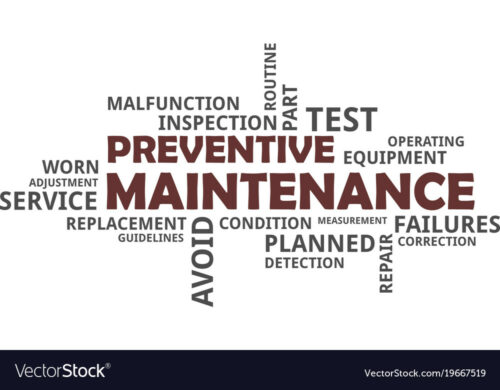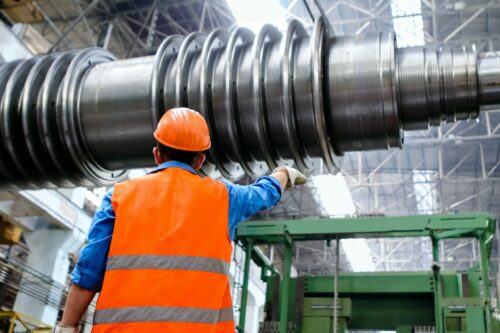MRP = Material Requirements Planning
MRP stands for Material Requirements Planning. It is a software solution that helps manufacturers calculate more accurately what materials they need, when and in what quantities. Over time, MRP software has developed more features and most of them (called MRP II) now include detailed capacity planning, scheduling, shop floor control and other calculations. MRP II allows you to compare forecasts with actual data, analyze performance, and improve processes to increase efficiency.
ERP = Enterprise Resource Planning
ERP, on the other hand, stands for Enterprise Resource Planning. It is a more comprehensive software system with additional functionality to help manufacturers automate and streamline business processes, not only related to manufacturing but across their entire enterprise. MRP-based management software packages are designed not only to help manufacturers better plan their inventories and scheduling but also to assist them in the areas of sales, quotes and estimates, customer relationship management, accounting, human resources, project management, etc.
ERPs go beyond MRP, they connect and integrate all the different aspects of your business into one database, allowing you to streamline tasks and processes, as well as share information without errors throughout your company. ERP systems feed your business with accurate data and help you increase efficiency and reduce costs throughout your organization.
In short, ERPs do it all, while MRPs are more specific to manufacturing processes.
Brief history of MRP and ERP
The term ERP was first used in the 1990s by the Gartner Group, but ERP systems have deep roots in the manufacturing industry and can trace their roots back to the history of MRP production systems developed in the 1960s.
In the 1960s, manufacturers realized they needed a better way to manage, track, and control their inventory, and computer technology was advancing to the point where it could meet these requirements. The basic software solutions, called MRP, or material requirements planning systems, were developed to meet the needs of manufacturers. These systems helped manufacturers to monitor inventory and reconcile balances, and to integrate very basic manufacturing, purchasing, and delivery functions.
During the 1970s, more and more manufacturers began to adopt material requirements planning systems, and the systems themselves began to become more sophisticated. In the 1980s, MRP systems evolved into what is now called MRP II (sometimes referred to as Manufacturing Resource Planning systems). These systems included the same functionality as the original MRP systems, but also had expanded functionality, making them better able to manage planning and production processes and adding more MRP data.
Upgrade to modern ERP systems
In the 1990s, the first real ERP systems were put into operation. These systems also extended the basic inventory control and manufacturing processes of the previous MRP systems to other departments, functions and functions, such as accounting, finance and sales. These systems paved the way for ERP solutions as we know them today by integrating several processes, tasks and departments into a single system.
Today’s ERPs are fully integrated systems that connect and feed all departments and all aspects of your business. ERPs provide manufacturers with a powerful, real-time tool that manages a single, shared database that is accessible to all departments within an organization.
Modern ERP solutions include not only manufacturing, supply chain management, accounting and financial capabilities, but can also benefit from advanced reporting and business intelligence capabilities, sales force and marketing automation, customer relationship management and project management.
An ERP will improve a manufacturer’s performance by increasing productivity and optimizing resource planning and overall operations.
MRP as an ERP module
With all this talk about ERP, don’t lose sight of what an MRP can do for a manufacturing company. MRP allows you to control your manufacturing processes and includes powerful tools for production planning, BOM and inventory management, machine capacity planning, demand forecasting, and quality assurance. It is important to note that ERP does not replace MRP and that some smaller manufacturers may only want and need MRP to help them manage their manufacturing processes.
In fact, ERP systems designed for manufacturers will include MRP as a module within the ERP system. In this way, manufacturers can take full advantage of the important features, functionality, and functionality offered by MRP, but also have access to the broader functionality included in ERP systems. ERP systems are excellent business tools for SMBs that are expanding their business and need a better way to manage all their business processes.
Today’s ERP systems are also extremely flexible and can be customized to meet your business needs. ERP vendors now offer a variety of tools, features and functionality designed to meet the specific needs and challenges of different industries.
Take advantage of the power of modern ERPs
ERPs are truly the workhorse of the manufacturing sector and can help you achieve your goals and grow your business. As a manufacturer, you need to take advantage of the flexibility and customized solutions that an ERP can offer you.
1. Increased efficiency
Doing things faster, better and more consistently is the ultimate goal for manufacturers. Management software packages help you increase the efficiency of your plant because they help you do everything better. For example, you will manage your inventory with greater accuracy and plan your production with greater precision. And by improving all your tasks and business processes, you’ll become a more efficient and productive operation.
2. Better collaboration
ERPs allow your entire company to operate from the same centralized shared database. This opens the door to collaboration by allowing your staff to share information and data quickly and easily. ERPs allow you to break down information silos and create a more open, transparent and collaborative workplace.
3. More accurate forecasting
Accurate forecasting is essential for manufacturers because it allows you to better plan and manage your business. Armed with the data that an ERP provides you with from its reporting capabilities, you will be better informed and able to make better decisions and create better forecasts for your business.
4. Reduced operational costs
With an ERP, you will reduce operational and administrative costs because you will run all your operations from a centralized system, avoiding the need to pay for multiple systems and the associated maintenance costs. In addition, because ERP systems allow you to better manage your entire production floor, you will avoid delays that can cost you money, for example, by allowing you to better manage items with long delivery times or other processes that can slow you down.
Conclusion
MRP and ERP software are very closely linked. However, each will give you different capabilities and levels of performance, and the scope of services they offer is different. ERP and MRP offer excellent manufacturing functionality, but the real question is whether you need support with more than just manufacturing processes. MRPs focus specifically on manufacturing processes, while ERPs offer a broader range of solutions, including accounting, project management, business intelligence, sales, and customer relationship management.


